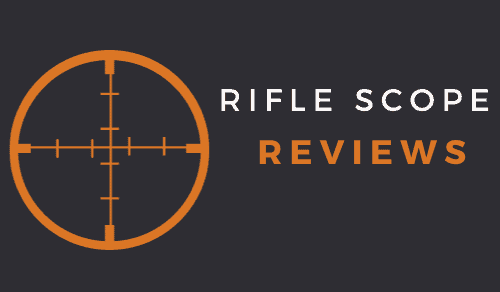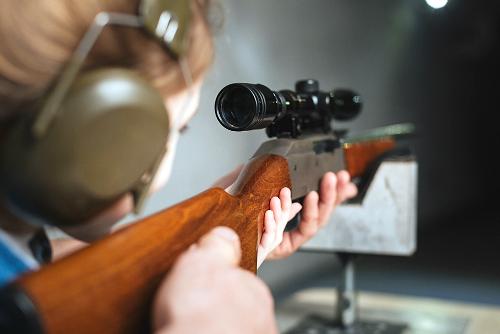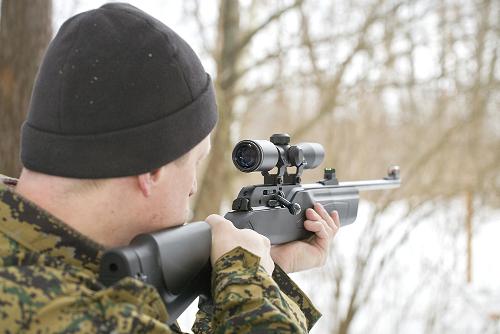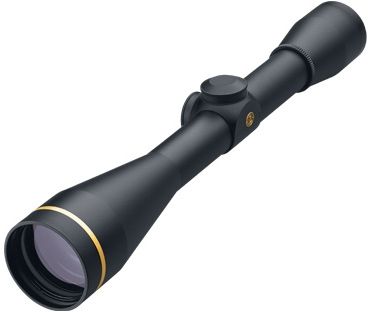As an Amazon Associate I earn from qualifying purchases. Amazon and the Amazon logo are trademarks of Amazon.com, Inc, or its affiliates.
Like most kids that grew up in the country, I was introduced to shooting at a young age with a single shot, bolt action .22 with open sights. That rifle (A Glenfield that I still have to this day) was my first rifle, and it still shoots just a well today as it did then. The single-shot operation was instrumental as I learned gun safety, and the open sights were a key component as I learned the fundamentals of marksmanship.
The open sights somewhat limited my effective range, which helped me learn basic hunting and stalking skills when hunting small game. As I got older, I really wanted a scope for that rifle, and my grandparents obliged for my 13th birthday. That scope (which was my first) was a fairly inexpensive Tasco 4 powered scope, but I thought it was the greatest thing since sliced bread.
Growing up in the 80’s (which really dates me), fixed powered rifle scopes were really common as variable powered scope models were only just being introduced, and were quite expensive for that time period. As such, most all my friends also used either open sights or fixed powered scopes as well.
I used that Glenfield and Tasco combo to harvest quite a few squirrels, rabbits, and pigeons during my early teens. The Tasco was equipped with a standard duplex reticle so, any hold-overs at ranges over 50 yards were done using the old “Kentucky windage” technique, which basically amounted to a guess based on experience. I once hit a rabbit in a field at about 80 yards via Kentucky windage on the first shot, but I’m quite sure that was pure luck versus skill.
When I turned 16, my parents gave me a Marlin 39A lever action .22 for Christmas, and I promptly used my saved money from cutting grass to purchase a Weaver K8 fixed 6 power scope for it. I had the scope mounted in some fancy see-through rings, so I could use the open sights on the Marlin for close shots but also use the scope for longer shots. The glass on the Weaver K8 was significantly better (at least to my 16-year-old eyes) compared to the 4X powered Tasco. The better glass, coupled with the cool action on the 39A, ultimately replaced my Glenfield single shot as my go-to .22 rifle.
My first deer rifle was a Marlin 336 30-30 (which was the most popular rifle and caliber during that tie period), and I also equipped it with a Weaver K8 fixed 6 powered scope.
Having used a fixed powered scope for much of my teenage years in both hunting and shooting situations, I can personally attest to the simplicity and effectiveness of using a fixed powered rifle scope. That being said, fixed powered scopes are dying a slow death as they are steadily being replaced with the more popular variable powered scope option.
If you have done any shopping for a 6x fixed power scope, you’ve probably noticed the following two trends:
- Within the fixed power scope options that are currently on the market, there are far more 4x fixed power scopes available compared to the very small number of 6x fixed power models available these days. This means you’ll have way more rifle scope models to choose from in the 4x fixed power versus the 6x power.
- The majority of the 6x models on the market are manufactured by European based scope brands as fixed power rifle scopes are far more popular in Europe compared to the U.S.
The Pros and Cons of Fixed Powered Scopes
Like most everything in life, fixed power scopes come with pros and cons, so let’s go over those.
Pros
Simplicity – Compared to a variable powered scope, fixed powered scope models offer a very simplistic and easy approach to use. For the most part, there are no dials to turn, buttons to adjust, etc.; you just look through the scope, find the target, and pull the trigger.
That simplistic approach is very popular for some people, and one of the reasons that most kids start out shooting using a fixed powered scope.
Optical Brightness – Because a fixed power scope uses fewer lenses compared to a variable powered model, the fixed powered models tend to offer a brighter view between the two scopes. I’ve actually compared my old Weaver K8 6x scope up against some modern 3-9 powered scopes, and the 6X is noticeable brighter, especially in low light situations.
Obviously, I can’t really tell you exactly how much brighter for sure, but most people in the rifle scope industry agree that a fixed powered scope is “around” 10% brighter than a variable powered model.
Also, the degree of brightness increases as the fixed power of the scope increases. For example, a fixed 16X powered scope will be brighter than a fixed 6x powered scope.
Wider Field of View – The “Field of View” term is a fancy way of saying that how much you can see through a scope at a certain power at a specific distance looking right to left. Field of view is measured in feet, and the normal distance is 100 yards.
With a variable powered scope, the FOV value goes down as the power magnification goes up. As a real-life example, let’s use a Vortex Crossfire II scope in a 6-25X50 configuration. The specs on that scope indicate that at 6X power, the FOV at 100 yards in 17.3 feet. On 24X at 100 yards, the FOV drops down to 4.4 feet.
Compare those numbers to the FOV on the Weaver K6, which is nearly 19 feet at 100 yards. So, the shooter sees an extra 2 feet in the FOV compared to a variable powered scope.
Now, not every fixed power scope offers a wider FOV, but several do, so it’s worth mentioning.
Lower Cost – Typically speaking, the fixed power scope models usually cost less than their variable powered counterparts, especially if you are comparing the costs within the same brand.
The lower costs are tied to fewer lenses and fewer internal parts, which equates to a less expensive scope.
Less weight – That same concept of fewer lenses and fewer internal parts also means that a fixed powered scope usually weighs less than its variable powered cousin.
Now, to be fair, sometimes the difference in weight between a fixed power versus an adjustable powered scope is only a few ounces, but, if scope weight is a factor for you, then a fixed power scope may be something to consider.
More durable – Also related along with the fewer components approach, the fewer moving parts means fewer opportunities for parts failure. This means that fixed powered scope tends to be more durable over time compared to an adjustable powered one.
The two fixed powered scope models I mentioned above on my own rifles are both over 30 years old. Both still hold zero and function without any issues.
Cons
Fixed parallax – Of all the current 6X powered rifle scopes that are currently on the market, hardly any offer either a side focus option or an adjustable parallax feature. Most 6X fixed power scopes come with a fixed or preset parallax that is usually set at 100 yards.
The issue with a fixed parallax is the fact that it can’t be adjusted down or up as needed. If the parallax is set at 100 yards, then any target that is less than 100 yards away won’t be displayed in a clear image in the scope. Most likely, it will display with some blurriness or aberration.
If you’re running a 6X powered scope for hunting and you’re hunting large game like deer or elk, then it most likely won’t be a problem. However, if you’re trying to hunt small game or shooting at small targets under 100 yards, then it will be more noticeable.
Some of the brands that still offer a fixed power scope may have the ability to reset to parallax to a shorter distance. This was a service that Leupold use to provide for a small fee as I had a customer who sent his Leupold M8 fixed 8 power scope in and had them adjust the parallax down to 60 yards from 100 yards.
The fixed power – Some might argue that the fixed power itself is a con as there isn’t a way to increase or decrease the power if needed. This is true, but its also part of the appeal of a fixed power scope. You take the good with the bad.
Fewer fixed power scope options – As I mentioned before, the fixed power scope market is dwindling every year as more and more shooters opt for variable powered scopes. Riflescope makers stick with what sells, so when a specific scope model or type is no longer selling at a certain volume; it’s phased out.
This is precisely what is happening to most all the fixed power scope options. Some brands, like Vortex, have completely stopped offering any fixed power scope models at all. It is possible that some of the six power scope models I suggest below may not even be available for sale when you read this post.
Because of this, your choices for a 6x powered scope have dwindled quite a bit.
Here are my favorite 6x fixed power rifle scopes (in no particular order):
Leupold FX-3 6x42mm
 As the most popular selling U.S. based rifle scope maker, Leupold is one of the few brands that still offers a very nice fixed 6X powered scope option. The Leupold fixed power scope models have changed with the times over the years, but Leupold remains one of the top sellers of fixed power scope models.
As the most popular selling U.S. based rifle scope maker, Leupold is one of the few brands that still offers a very nice fixed 6X powered scope option. The Leupold fixed power scope models have changed with the times over the years, but Leupold remains one of the top sellers of fixed power scope models.
Initially, the FX-3 6×42 was available with 4 different reticle options, but this model is currently only offered in Leupold’s Wide Duplex reticle. That’s unfortunate as Leupold use to offer this scope in a version with their LR reticle, which was basically Leupold’s version of a mil-dot.
This model is a second focal plane scope built on a 1-inch tube. Weighing in at only 13.4 ounces, this scope is ideal for hunters who want a small, lightweight scope that will perform when it counts. As a bonus, this scope is covered under Leupold’s amazing lifetime warranty.
However, this is not an inexpensive or entry-level fixed 6x powered scope. This is a well-built fixed 6X scope that is ready to go out of the box and should last for years and years.
Meopta MeoPro 6×42 Scope
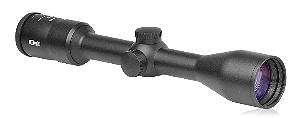 As Meopta is a European based brand, there are several U.S. based shooters and hunters who are not familiar with them. And that’s a shame, as Meopta offers some of the best quality glass I’ve seen for the price. I have a few Meopta scopes on rifles, and the glass is very comparable to higher-end European brands like Zeiss and Schmidt & Bender.
As Meopta is a European based brand, there are several U.S. based shooters and hunters who are not familiar with them. And that’s a shame, as Meopta offers some of the best quality glass I’ve seen for the price. I have a few Meopta scopes on rifles, and the glass is very comparable to higher-end European brands like Zeiss and Schmidt & Bender.
If you want a fixed 6 power scope with amazing glass for the money, then this Meopta may be one for you. It’s built on a 1-inch tube and features a 42mm objective. The FOV on this model is an impressive 18.3 feet at 100 yards.
This scope is available in 4 different reticle options:
- #1 Reticle
- #4 Reticle (Which is basically a German #4 reticle)
- #4B – This is modified German #4 with vertical and horizontal subtend marks for holdover and wind drift.
- Z Plex – Which is a thick duplex that narrows to a finer crosshair.
Schmidt & Bender 6×42 Klassik Scope
 If budget is not an issue, or you want the best 6X scope with the best glass that money can buy, then the S&B Klassik 6X42 scope might be one to consider. The glass on these is nothing short of amazing, but it comes with a hefty price tag.
If budget is not an issue, or you want the best 6X scope with the best glass that money can buy, then the S&B Klassik 6X42 scope might be one to consider. The glass on these is nothing short of amazing, but it comes with a hefty price tag.
Unlike most fixed 6x scopes, this model is available in both a 1-inch version and a 30mm version. Also, a bit unique is the fact that most of the Klassik 6×42 models are first focal plane models, where the Meopta and Leupold I mentioned previously are second focal plane models.
The price tag well north of $1,000 will be a major deterrent for most shoppers, but this is a more specialized fixed power scope. Schmidt & Bender also offer a fixed 7X and fixed 8X power scope models that are very popular in Europe.
Honorable Mentions
Here are a few 6x models that deserve an honorable mention:
Primary Arms Classic 6×32 with the ACSS-22LR Reticle
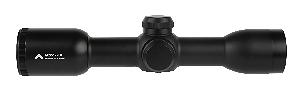 If you haven’t heard of Primary Arms optics, then you’re potentially missing out on some good glass at very reasonable prices. Primary Arms optics is mostly centered around AR-based optics, but do offer a few non-AR based scopes, and this 6×32 model is one.
If you haven’t heard of Primary Arms optics, then you’re potentially missing out on some good glass at very reasonable prices. Primary Arms optics is mostly centered around AR-based optics, but do offer a few non-AR based scopes, and this 6×32 model is one.
The reason this scope is an honorable mention and not included in the recommended list of 6x scopes is the reticle. This scope only comes with one reticle option, the Primary Arms patented ACSS-22LR reticle. As the name somewhat implies, this reticle is designed for the 22LR, so it doesn’t function well with any other calibers.
If it came in a different reticle, then I’d definitely consider adding it to the list of recommended fixed 6 powered scopes.
However, if you are shopping for a fixed powered scope for a .22, and want a really nice one, then this one is worth looking at.
Weaver Classic K Series 6×38
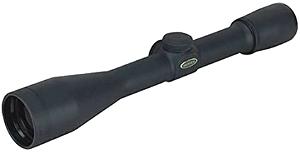 This scope is aptly named as it most definitely is a “classic.” Weaver has been offering a fixed 6x version of this scope series since the early 1960s. I’ve owned several over my lifetime, and all have served me well.
This scope is aptly named as it most definitely is a “classic.” Weaver has been offering a fixed 6x version of this scope series since the early 1960s. I’ve owned several over my lifetime, and all have served me well.
This scope series would most definitely be on my list of recommended 6x power scopes, if not for the fact that Weaver has stopped producing this model. As a matter of fact, as of June 2019, Weaver is no longer producing any rifle scopes at all (which is a real shame). Weaver Optics is now only producing scope rings and bases.
However, you can still find a few of these newer and older K 6×38 scopes here and there:
So, what fixed 6x power scope do I recommend?
You can’t go wrong with any of the 3 models I suggested above, but here are a few suggestions that might help:
- If you want to buy an American made scope, then the Leupold FX-3 is your only real option.
- If you want the best value for the money, then I think the Meopta 6×42 is the best option.
- If you want the best glass and don’t mind spending the money for it, then the S&B Klassik might be something to look at.
FAQS
Here are some frequently asked questions that I am asked, and read about:
Can you use fixed power scopes for hunting?
Absolutely. I grew up hunting with a fixed power scope, and as did several generations before me. They work very well for hunting due to their simplicity and ease of use, which allows you to get on target quicker.
Honestly, there are very few hunting scenarios where a fixed powered scope is not a viable option. Now, is a fixed powered scope absolutely ideal for every possible hunting situation? No, not really, but they will work just fine for most hunting situations.
I have a family member (Uncle by marriage) that was hardcore hunter who hunted big game all across the U.S. and even went to Africa once in the 1970s. To my knowledge, he didn’t even own a variable powered scope and preferred to use a fixed power scope on every rifle he used. Throughout his life, he bagged everything from an Antelope in Wyoming to a bull elephant in Africa using two rifles. One had an older Lyman fixed 6x scope, and the other had a Redfield Wideview fixed 4x scope.
Are the Leupold fixed power scope models any good?
Over the years, Leupold has always offered several fixed powered scope options that were top sellers as far as the fixed power scope market was concerned. Back in the ’70s and ’80s, Redfield was Leupold’s primary competition, and both brands featured excellent fixed powered scope choices.
I had a Leupold M8 fixed 8x scope that I regret selling to this day. It had, what I thought, was excellent glass for the time period, and held up extremely well. I banged that scope into trees, dropped it on more than one occasion, and even slipped while crossing a creek and partially submerged it. It held zero every time I checked it, despite the hard use. Again, never should have sold that one!
So, to answer the question, yes, the newer and older Leupold fixed power scope models are good quality scopes.
What is the best fixed power scope available?
As I’ve written previously, I’m always cautious about trying to answer the “what is the best” types of questions because the answer or answers are all based on one person’s opinion. Ask 5 people the same “what is the best” question, and I guarantee you will not get the same 5 answers.
The best fixed power scope available is the one that you like based on your specific needs, your budget, your expectations, and your level of enjoyment that using that scope brings you.
However, if I were making a suggestion about buying a fixed power scope, I’d say that you’ll get closest to your own personal definition of “best”, buying quality glass over features. And by that, I mean that I have always felt that you should buy the best quality glass that you can afford within your budget, even if it means sacrificing some features to get it.
As I come across more questions related to a fixed 6x scope, I’ll add them here.
I’ve been working in the firearms and sporting optics industry for over 20 years, with a personal and professional interest in all things related to rifle scopes, Through a combination of work experience, formal training, and personal experiences, I have extensive experience mounting, testing, and evaluating different rifle scope models across most major optical brands.
